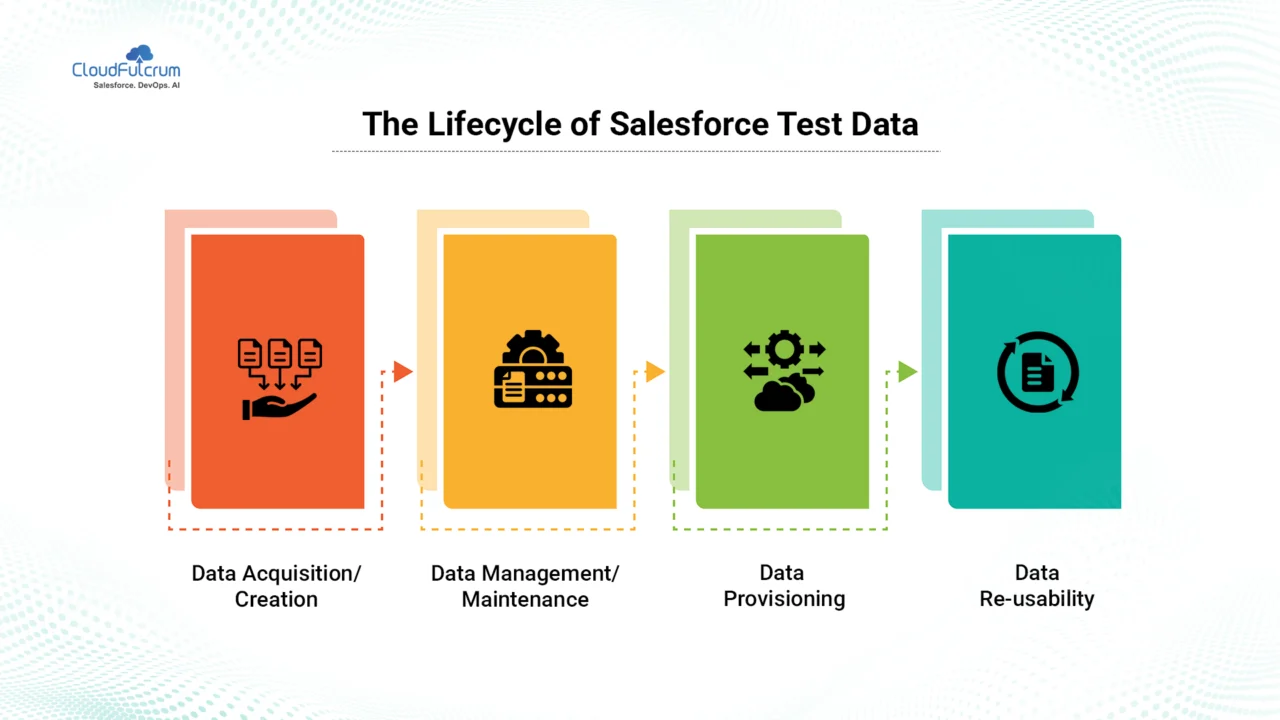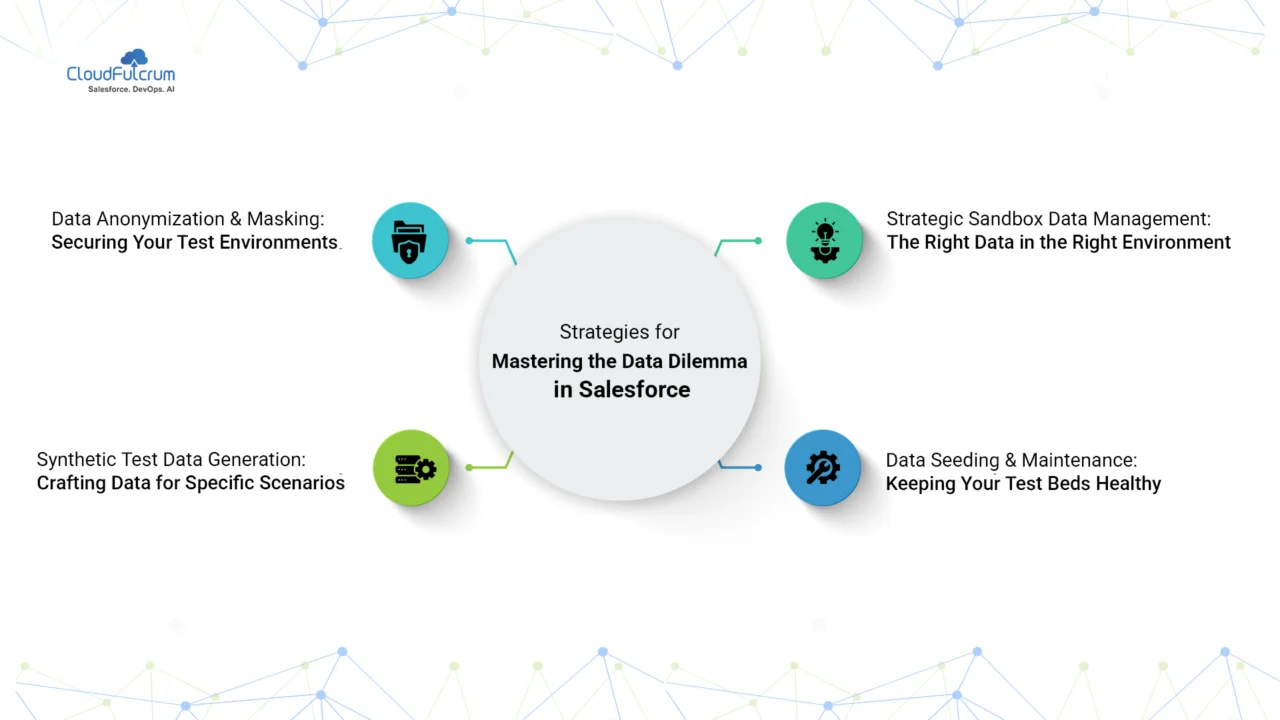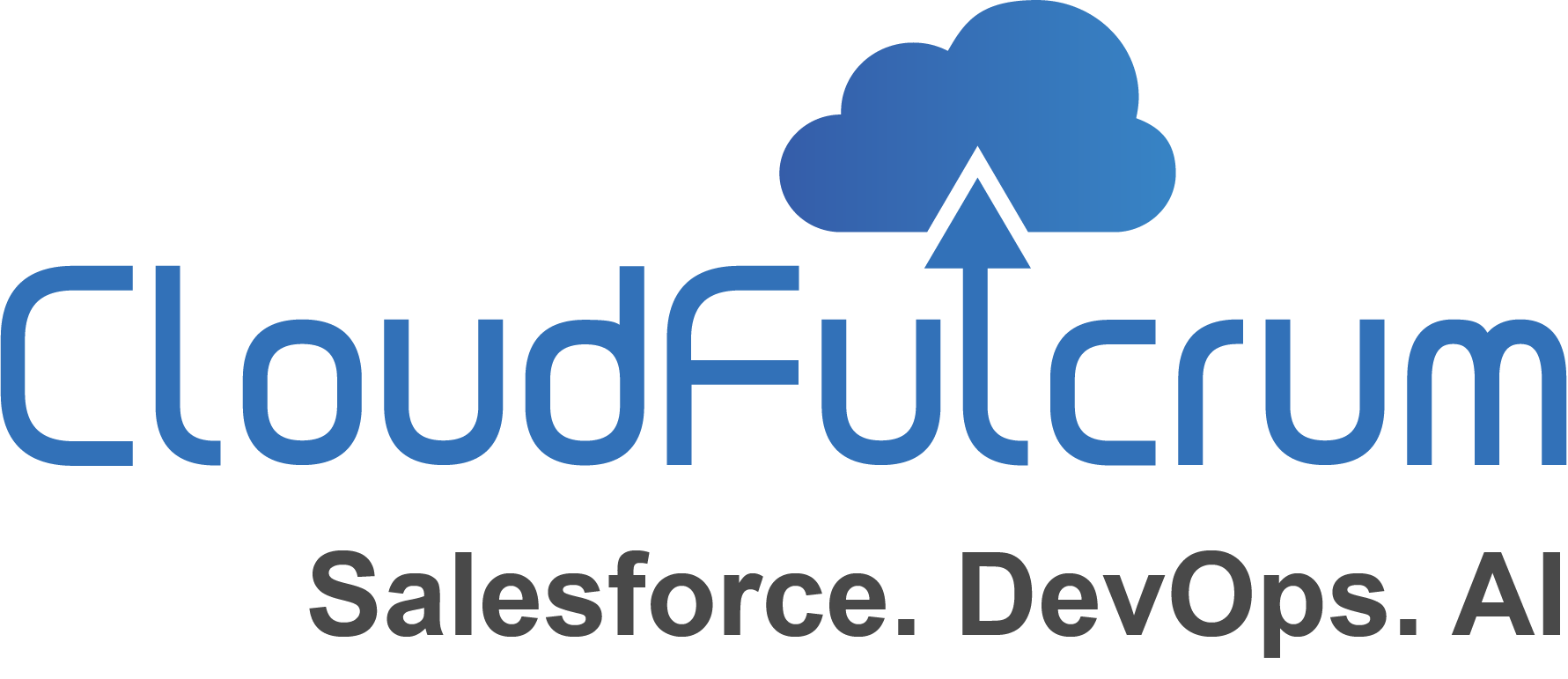We’ve journeyed through the critical landscape of Salesforce quality: understanding the imperative of structured testing (Blog 1), laying the foundational practices (Blog 2), unlocking the ROI of automation (Blog 3), and building excellence with best practices and tools (Blog 4). Now, we arrive at what is arguably one of the most persistent, complex, and often overlooked challenges in achieving robust Salesforce quality: Test Data Management (TDM).
Imagine building the most sophisticated test automation framework, with perfectly crafted scripts designed to validate every critical process. Now, imagine those scripts failing sporadically, not because of a bug in your code or configuration, but because the underlying test data is inconsistent, missing, or simply not representative of real-world scenarios. This is the “Data Dilemma” – a silent, insidious force that can undermine even the most well-intentioned quality efforts.
For Salesforce teams, mastering TDM isn’t just about populating sandboxes; it’s about safeguarding security, ensuring compliance, achieving reliable test outcomes, and ultimately, accelerating your path to production. This “flagship” article will deep dive into why TDM is uniquely challenging in the Salesforce ecosystem and provide authentic, actionable strategies to conquer it, making it an indispensable part of your quality blueprint.
Why Test Data Management is Mission-Critical for Salesforce
Salesforce environments present a unique confluence of factors that elevate TDM from a mere operational task to a strategic imperative:
- Vast Data Volume and Intricate Interdependencies:
-
- Salesforce orgs, particularly in enterprise settings, accumulate massive amounts of data – millions of accounts, contacts, opportunities, cases, and custom records.
- Crucially, this data is highly interconnected. An Opportunity is linked to an Account and a Contact; a Case might relate to both a Contact and an Asset. Breaking these relationships, or having incomplete linked data, immediately invalidates many real-world test scenarios. Testing an Opportunity flow without a valid Account or Contact attached is meaningless.
- Sensitive Information and Compliance Risk:
-
- Production Salesforce orgs are treasure troves of highly sensitive information: Personally Identifiable Information (PII) like names, addresses, emails, phone numbers; financial data; health records (PHI); and proprietary business intelligence.
- Copying this data directly to lower environments (like UAT or development sandboxes) without proper anonymization poses an enormous security risk and a severe compliance violation (e.g., GDPR, HIPAA, CCPA, PCI DSS). Data breaches in non-production environments are just as damaging as those in production, if not more so, given often weaker controls.
- Sandbox Limitations and Refresh Complexities:
-
- Salesforce sandboxes are essential for development and testing, but they come with inherent TDM challenges:
-
-
- Storage Limits: Developer and Developer Pro sandboxes have limited storage, preventing full data replication. Even Partial Copy sandboxes have a limited data volume.
- Refresh Cycles: Full Copy and Partial Copy sandboxes have infrequent refresh cycles (e.g., every 29 days for Full Copy). This means test data can quickly become stale and out of sync with production.
- Metadata vs. Data: Sandboxes copy all metadata (configurations, code) but only a subset (or none) of data for most types.
-
- Impact on Test Reliability and Automation ROI:
-
- Flaky Tests: Inconsistent or insufficient test data is the leading cause of “flaky” automated tests – tests that pass sometimes and fail others without any code changes. This erodes trust in your automation suite.
- Reduced Coverage: Without diverse data, you cannot adequately test all possible scenarios, edge cases, or different user profiles, leading to significant quality gaps.
- Wasted Automation Effort: Investing heavily in automation only to have it crippled by poor data management is a significant waste of resources and prevents you from realizing the promised ROI.
The Lifecycle of Salesforce Test Data
Effective TDM involves managing data through a continuous lifecycle, not as a one-time task:
- Data Acquisition/Creation:
-
- Copying from Production: The quickest way to get realistic data, but demands robust anonymization. Best for Full/Partial Copy sandboxes.
- Synthetic Data Generation: Creating entirely new data that mimics real-world patterns but is fictitious.
- Data Seeding: Programmatically or manually inserting specific data sets into an environment.
- Data Management/Maintenance:
-
- Refresh/Update: Keeping data current with production or ensuring it evolves with feature changes.
- Purging/Cleanup: Removing obsolete or test-generated data to maintain sandbox performance and clean states.
- Variety & Coverage: Ensuring the data set covers a wide range of scenarios (e.g., different account types, complex hierarchies, specific picklist values).
- Data Provisioning:
-
- Making the right data available to the right testers/automation scripts at the right time.
- Data Re-usability:
-
- Designing data for multiple tests and cycles where possible.

Strategies for Mastering the Data Dilemma in Salesforce
Conquering the TDM challenge requires a multi-faceted approach, leveraging native Salesforce capabilities, strategic processes, and specialized tools.
1. Data Anonymization & Masking: Securing Your Test Environments
This is arguably the most critical aspect for sensitive data. The goal is to transform real production data into realistic, yet completely unidentifiable, test data.
- Techniques:
-
- Substitution/Shuffling: Replacing sensitive values (e.g., customer names, email addresses) with random but similarly formatted fake values from a predefined list or by shuffling existing production data within a field.
- Obfuscation/Masking: Applying a consistent, reversible (for debugging, if needed) transformation to data. For example, replacing parts of a credit card number with ‘X’s, or scrambling Social Security Numbers.
- Conditional Masking: Applying masking rules only if certain criteria are met (e.g., mask customer data only for inactive accounts).
- Data Generation: For very sensitive fields, generating entirely new, synthetic values instead of transforming real ones.
- Key Tool: Salesforce Data Mask (Managed Package):
-
- This is Salesforce’s official solution for data anonymization during sandbox refreshes.
- How it works: Installed as a managed package in your production org. When you refresh a sandbox, Data Mask applies configured masking rules to the selected data, ensuring sensitive information is anonymized before it lands in your sandbox.
- Features: Supports various masking methods (random, replace from library, delete records, etc.), works at the object and field level, and handles relationships (masking related records consistently).
- Authenticity Note: This is the gold standard for native Salesforce data anonymization. Teams should prioritize understanding and implementing it.
- Third-Party DevOps/TDM Tools:
-
- Many Salesforce DevOps platforms (e.g., Copado, Gearset, AutoRABIT) and dedicated TDM solutions (e.g., SFDMU, OwnBackup’s Sandbox Seeding) offer sophisticated data masking and anonymization capabilities, often with more flexibility and automation than the native Data Mask package for specific use cases.
2. Synthetic Test Data Generation: Crafting Data for Specific Scenarios
When production data isn’t suitable (e.g., too sensitive, missing specific edge cases, or for new features), generating synthetic data is key.
- Methods & Tools:
-
- Apex Scripts/Utilities: Write custom Apex code to programmatically create complex hierarchies of records (e.g., Account with multiple Contacts, Opportunities, and Cases). This provides granular control.
- Data Loader/Workbench: Create CSV files with synthetically generated data (using tools like Excel, Python scripts with Faker libraries, or specialized data generators) and then import them into your sandboxes.
- Automation Frameworks: Integrate data generation logic directly into your automated test scripts. Before a test runs, it can create the exact data it needs, ensuring a clean and controlled test state. This is highly effective for “on-demand” test data.
- Dedicated Test Data Generation Tools: Some commercial TDM tools specialize in generating realistic, high-volume synthetic data based on predefined schemas and patterns.
- Pros & Cons: Synthetic data offers full control, avoids compliance issues, and is perfect for edge cases. However, it can be time-consuming to build and maintain, and might lack the unpredictable “messiness” of real production data.
3. Strategic Sandbox Data Management: The Right Data in the Right Environment
Your sandbox strategy, as discussed in Blog 2, is intricately linked to TDM.
- Developer/Developer Pro Sandboxes:
-
- Strategy: These should contain minimal, highly targeted data. Developers should create just enough data to unit test their specific code or configurations. Avoid large data loads here to maximize refresh speed and focus.
- TDM Approach: Primarily synthetic data generation or small, curated “gold standard” test data sets loaded via scripts.
- Partial Copy Sandboxes:
-
- Strategy: Ideal for functional, integration, and initial UAT. They provide a subset of production data, making them more realistic than Developer sandboxes.
- TDM Approach: Leverage Sandbox Templates to select specific objects and volumes of data to copy. Apply Salesforce Data Mask during refresh for anonymization. Supplement with synthetic data for scenarios not covered by the copied subset.
- Full Copy Sandboxes:
-
- Strategy: Replicas of production, essential for performance testing, comprehensive UAT, and final staging before go-live.
- TDM Approach: Critical to run Salesforce Data Mask after every refresh. These are often the only environments where you’ll get close to production data volumes and complexities without risking real data. Manage their infrequent refresh cycles carefully.
- Refresh Strategy: Plan your refresh cadence. For environments that need to be frequently updated with fresh data (e.g., weekly for a Partial Copy), ensure your TDM processes (masking, re-seeding) are automated and efficient.
4. Data Seeding & Maintenance: Keeping Your Test Beds Healthy
Beyond initial data population, ongoing management is crucial.
- “Gold Standard” Test Data Sets:
-
- For critical, repeatable tests (especially regression), maintain small, carefully curated sets of “gold standard” test data. This data is known, stable, and designed to pass or fail specific tests. Version control these data sets (e.g., as CSVs or JSON files alongside your test scripts).
- On-Demand Data Creation within Automation:
-
- A powerful technique for automated tests. Each test script creates its own prerequisite data (e.g., a new Account, Contact, and Opportunity) before executing the test.
- Benefits: Ensures a clean test state every time, reduces data dependencies between tests, and avoids “data pollution” in the sandbox.
- Drawbacks: Can make test execution slower if many records are created. Requires robust cleanup or dedicated sandbox refreshes.
- Automated Data Purging/Cleanup:
-
- Implement scripts or processes to regularly delete test data that is no longer needed. This prevents sandboxes from becoming bloated, improves performance, and reduces the risk of hitting storage limits.
- Version Control for Data Creation Scripts: Treat Apex scripts, Data Loader mapping files, or custom data generation tools as code and store them in your version control system (Git). This ensures reproducibility and collaboration.

The Symbiotic Relationship: TDM and Automation
Test Data Management and Test Automation are not isolated disciplines; they are mutually dependent.
- Good TDM Fuels Reliable Automation: Automation scripts are only as good as the data they interact with. Consistent, realistic, and available test data is the bedrock for stable, reliable, and trustworthy automated test results. Without it, you’ll be constantly debugging “flaky” tests rather than actual defects.
- Automation Facilitates TDM: Test automation frameworks can be extended to automate aspects of TDM itself – creating synthetic data on demand, performing automated data cleanup after test runs, or integrating with TDM tools for seamless data provisioning.
The ultimate goal is a continuous feedback loop: well-managed data enables robust automation, which in turn provides rapid feedback, leading to higher quality Salesforce deployments.
Conclusion: Your Data is Your Quality Advantage
Mastering Test Data Management for Salesforce is not merely a technical chore; it is a fundamental pillar of your quality assurance strategy. Neglecting it leads to unreliable tests, security vulnerabilities, compliance headaches, and ultimately, a reduced return on your significant Salesforce investment.
By strategically implementing data anonymization, leveraging synthetic data generation, optimizing your sandbox data strategy, and adopting smart data seeding and maintenance practices, your Salesforce team can overcome the data dilemma. This robust TDM foundation will empower your manual and automated tests to deliver accurate, consistent results, building unwavering confidence in every deployment.
With this crucial piece of the puzzle in place, we’re now ready to synthesize all these elements into a holistic strategy. In our final blog post, “Designing for Resilience: Salesforce Test Architecture & Continuous Quality,” we will explore how to integrate everything we’ve learned – from structured testing and automation to effective TDM – into a comprehensive, continuously improving quality framework for your Salesforce enterprise.

